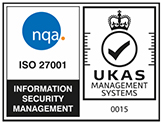Warfarin is the most commonly used oral anticoagulant (drugs that prevent blood from clotting) used in the UK.
It is often prescribed where there has been a significant blood clot that has caused a medical complication, such as pulmonary embolism (clot in the lung) or deep vein thrombosis (DVT – the majority of cases occurring within the calf of one or both legs).
Other situations where it is prescribed include:
- Prosthetic heart valves
- Atrial fibrillation (where an irregular heart can cause a clot to form)
Patients receive a book (‘yellow book’) that explains the purpose of being on warfarin, as well as the level of anticoagulant that should be achieved. This is measured on a regular basis in order to alter the dose according to the degree of anticoagulant activity - desired to reduce the risk of clot formation.
Warfarin is a once a day medication which acts on vitamin K - making less of it available - so increasing the time for clot formation. The success is determined by blood testing for the international normalisation ratio (INR). This investigation is performed on a weekly basis and the INR result is used to adjust the warfarin dosage accordingly.
Where can increased risk of bleeding occur?
- Over 75 years of age
- Taking other blood-thinning medications.
- Hypertension
- Previous stroke
- Renal problems
- Oncological difficulties
- Liver disease (including alcoholism)
- Bleeding disorders (e.g. haemophilia)
- Patients should know that certain drugs and foodstuffs can lead to complications. This is why a detailed drug, food and past medical history including an operative procedure should be documented.
Warning signs of excessive bleeding include:
- Colour changes – reddish or brownish colour urine, black or bloody stools, vomiting dark blood altered material (known as coffee grounds).
- Trauma is an associated risk factor for internal bleeding, such as cranial injury, evolving even with a relatively minor head injury (hence changes in the NICE guidance about when to undertake CT scanning of the head.
- Other problems include heavy periods, joint or muscle aches (again may be associated with minor injury)
Reversing the effects of warfarin
Warfarin’s effectiveness decreases rapidly. If it is required to reverse it’s effects more rapidly, a combination of vitamin K and Prothrombin Complex concentrate (a commonly used brand is called Octaplex) is given.
A common reason to reverse anticoagulant is the need to perform urgent/emergency operations, e.g. invasive procedures such as abdominal or cardiothoracic surgery, or dental surgery.
Medico-legal aspects - it is important to understand...
- The reason the patient has been put on warfarin;
- To see that monitoring of the degree of anticoagulant has been maintained on a weekly basis;
- And that any reason for its reversal has been clearly outlined.
There are often local guidelines in place to provide advice for starting, monitoring and stopping the use of warfarin, examples of which are listed below:
Other sources of information:
www.bcshguidelines.com/documents/warfarin_4th_ed.pdf
The linkage to conditions that involve warfarin can be found at:
www.evidence.nhs.uk/Search?q=nice+guidelines+for+anticoagulant+therapy
If you want further information about this particular topic, or wish to discuss the possibility of bringing a claim for an injury caused by Warfarin, or indeed any other type of injury, please contact the Dutton Gregory Clinical Negligence Team on (01202) 315005, or email k.marden@duttongregory.co.uk.






